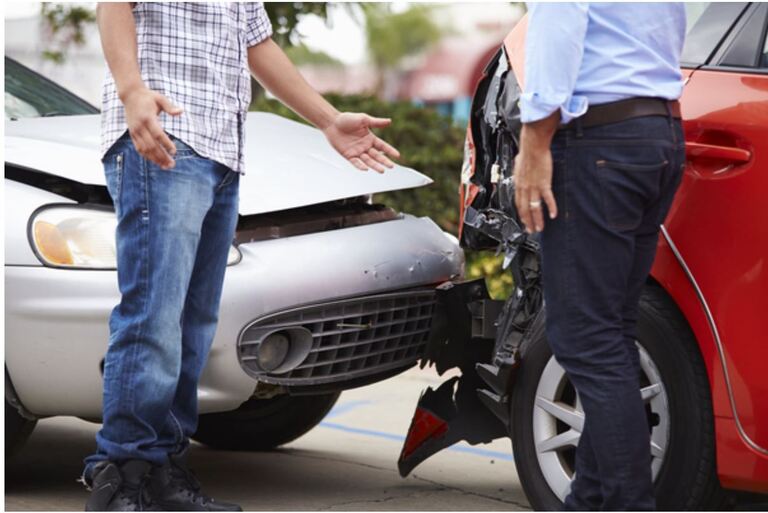
Most major manufacturers have begun developing cars with self-driving capabilities. Unfortunately, today’s self-driving vehicles are still imperfect. The concept of self-driving car accidents raises many questions and poses legal challenges for insurance companies and lawyers. Let’s look at a few of the issues self-driving car accidents present and try to tackle them.
Are Self-Driving Cars Actually Driverless?
Self-driving cars on the road today are not truly fully automated. Most have different levels of computerization that help promote safety and reduce human error. Because human error resulted in upward of 30,000 crash-related deaths in 2020, it’s been a big motivator in introducing driver-assisted technologies. So much so that it’s led to the creation of cars that do almost everything except drive 100% autonomously.
According to the Society of Automotive Engineers, there are six levels of computerized cars.
- Level Zero: No Automation—Some level 0 vehicles have safety features like backup cameras, blind spot warnings, and collision warnings. However, at this level, a car is not automated, and the driver controls everything.
- Level One: Driver Assistance—A vehicle’s automated systems can take control of the vehicle in specific situations. An example is adaptive cruise control, which controls acceleration and braking and allows the driver to take their feet off the pedals.
- Level Two: Partial Driving Automation—The driver must still keep their hands on the wheel and be ready to take control at any moment. However, level two vehicles are usually equipped with advanced driving assistance systems (ADAS) that can take over steering, acceleration, and braking in specific scenarios.
- Level Three: Conditional Driving Automation—These vehicles can handle all aspects of driving but still require a human driver to take over if road conditions fall below ideal conditions. Conditional automation vehicles are capable of driving themselves only under ideal conditions and with limitations.
- Level Four: High Driving Automation—The vehicle’s autonomous driving system is fully capable of handling all driving functions for limited routes and conditions, but a driver can take back control if they want to. These vehicles still have a steering wheel and pedals but do not require human input or oversight except under certain conditions.
- Level 5: Full Driving Automation—These cars can operate without a driver and may even lack a steering wheel or gas pedal. To operate a fully autonomous car, passengers only have to enter voice commands for onboard systems, such as air-conditioning, entertainment, and video calling.
As of 2022, level 5 cars do not yet exist. Even Tesla’s self-driving technology isn’t completely autonomous. By Tesla’s own admission, its current auto-pilot features require active driver supervision. This means Tesla’s self-driving vehicle still requires a driver to sit in the driver’s seat while the car ‘drives’ itself. This allows the driver to watch for hazards if the car’s FSD technology malfunctions, thereby avoiding a Tesla accident.
Who Is Liable in an Accident with an Autonomous Car?
Who is responsible when a self-driving car has an accident? Since self-driving cars are not fully self-driving and rely on numerous technological advances and hardware, establishing liability can be tricky. The Insurance Information Institute cites a study by the RAND Corporation that sees a shift from personal liability to manufacturer liability as more autonomous cars enter roadways. However, since most self-driving cars are not truly autonomous, this shift isn’t likely to occur until sometime in the future.
In Mississippi, Senate Bill 2676, section 2, also requires a human to have control of an autonomous car on the highway. It mandates that a human must oversee the car’s safe operation and be able to take over in the event of equipment malfunctions or failures. That means, for now, determining liability for an autonomous car accident is roughly similar to determining liability for any car accident.
Depending on who’s negligence caused the accident, liable parties might include:
- The driver of the autonomous vehicle,
- The vehicle’s manufacturer,
- The manufacturer of a defective vehicle component,
- Any other company in the vehicle’s chain of distribution, and
- A third party such as a vehicle repair shop or road construction contractor.
As you can see, when it comes to autonomous cars, establishing negligence and liability for a self-driving accident can get sticky. While a self-driving vehicle feature could have caused the accident, another factor may also have contributed. The determination of liability in all car accidents hinges on the results of a thorough investigation. For this reason, always consult an experienced car accident attorney before speaking with another party’s insurance company. An experienced attorney will walk you through the accident, review your case facts, and help you determine who to hold liable for your damages.
What If I’m the Driver of an Autonomous Car and Contributed to an Accident?
In many states, including Mississippi, you can file a claim to recover compensation for your accident-related injuries and damages even if you are partially responsible for the accident. Mississippi follows a pure comparative negligence system. This means that even if you are 90% liable and the other party is 10% liable, you can still recover compensation. The only caveat is that your award amount is reduced by your percent of fault.
Harris Law Firm Can Help
Self-driving car accidents can result in serious harm and give rise to complex legal questions. Whether you’re the driver of an autonomous car or you have been hit by one, the Harris Law Firm, PLLC, can help. We will provide you with top-quality service as we take the time to get to know you and help you devise a successful action plan. We love a challenge. We are proud to provide aggressive and experienced representation, and we will fight for every cent your case is worth. Contact us today for a free case review.


